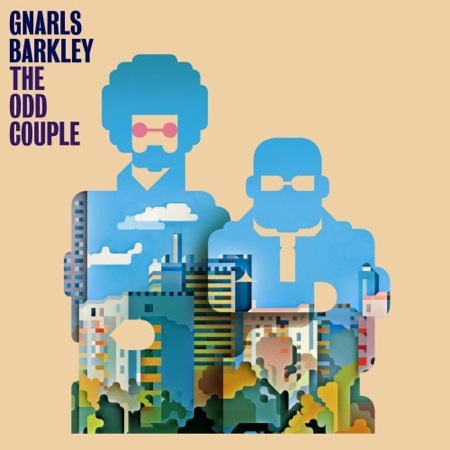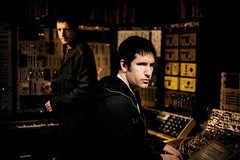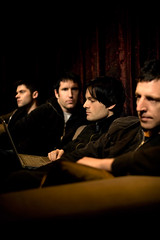When word of underground revolutionary rapper Immortal Technique‘s visit to the Fillmore in San Francisco reached me, I knew it had to be first on my list of concerts for the year. Having never seen live footage of him, I had no idea what to expect from a rapper that brings a huge variety of social, political, economic and musical issues to his songs. Considering the detail and complexity in his lyrics, I was a bit concerned with how it would translate to concert where numerous MCs have failed due to an unfamiliarity with their own lyrics, or a habit to truncate songs for a live setting. And I can say that while there are only a handful of artists that could share a stage with Immortal Technique based on their lyrical complexity and stage intensity, it would be difficult, if not impossible, to replicate the tenacity and focus Tech brings to his issues. From opening song to his finale, Immortal Technique’s show was a textbook demonstration of a rapper using an unreal level of energy, an extreme amount of intelligence coupled with social consciousness, and an uncompromising approach to his own music to put on a show that was incredible from start to finish.
I wasn’t sure what to expect from the crowd at this show…IT is only slightly well known, even among people into underground hip-hop, but at the same time has built up a huge following from the grassroots level. His subject matter attacks various issues from several perspectives, and I was interested to see if there would be one overriding demographic to his live audience. There wasn’t. The crowd was incredibly diverse both in ethnicity and style. It ranged from serious hip-hoppers wearing hoods to bikers with neck tattoos. It seems the social aspects of rap that Tech represents hit home and help to unify a large and disparate group of people.
When he arrives on stage he goes into an almost a cappella version of “The 4th Branch,” and I can hear people all over the audience join him as he spits out, “Jesus is the most quoted prophet in the Qur’an/and bombed innocent people trying to murder Saddam when you gave them those chemical weapons to go to war with Iran.” It’s clear from this early point that not only does the crowd know his songs, but the anger and identification they share with him over views of the systems in place within our social infrastructure is what brought a good number of them out. Following this, he drops the cricket sounds of “Industrial Revolution” and at the first beat the crowd is already moving with the beat. Tech’s delivery is crisp and clear. Unlike other live rappers, there aren’t any muddled lyrics or incomprehensible words here, just viciously deployed sentences with a staccato tempo that makes it feel like every word and sentence is waiting to explode from him into the mic. And the energy is contagious throughout the crowd.
When he slows it down with “Harlem Streets,” he still manages to keep the crowd engaged with a call and response of “Homicide Harlem/ blaow what’s the problem?” In a lot of hip-hop shows, the MCs will keep a call and response segregated throughout the audience, pitting the left against the center and the right. While he addresses the different segments of the audience on this call and response, the entire crowd is asking what’s the problem on every call, uniting the entire venue, not caring if it wasn’t for their section. Following these three well rehearsed openers, Tech rips into freestyles addressing revolutionary practice and rapping about the conditions on the streets where he’s from. Following this, he turns it over for a song to DJ GI Joe who blisters through a turntable set centered around samples from NWA‘s “Fuck the Police.” His scratches and record matching here are astounding as he juggles two records seamlessly, even going so far as to switch the crossfade with his nose at one point, mix one table while reaching behind his back for the other one, and even at two separate points spinning around, flipping records and the crossfader with his elbows.
When DJ GI Joe finishes the track, Tech informs the crowd that as serious as his lyrics are, as intentionally angry as he can come across sometimes, that on this particular evening he happens to be in a “jovial happy good mood.” He shares this good mood with the crowd when the next track he drops is “Point of No Return.” As the opening notes drop, the crowd starts moving in anticipation before starting to slam as the beat comes in and Tech starts ripping the lyrics. One of the things you notice in his live performances is that there is no halfway with any of his delivery. It feels like every word and sentence that comes out of his mouth is incendiary, and he’s going to catch fire if he doesn’t get them out hard enough. It’s an intensity of delivery that even in the best shows is rare, and Technique manages to keep that level up throughout the entirety of the show. When “Point of No Return” gives way to “Peruvian Cocaine,” the crowd starts bouncing with the Scarface/South American style sample. They do a great job of this live, as each rapper on stage takes on a different verse of this song that examines the various levels of employment within drug production and distribution.
After this, Tech talks for a few minutes about the future of our system and the way religion and politics intertwine in the distribution of economic resources and media attention. He goes on to explain that the revolutionary ideals he carries through his music extends to creating changes on a community level, and proves his dedication to this ideal by handing over the stage at separate points in the concert to two different groups…one a revolutionary faction based in Watsonville called the Brown Berets, concerned with the unification of races and religions to overcome the division fostered by political initiatives, and the second a group called Omeid International, that is focused on rebuilding the war ravaged streets and communities of Afghanistan (thanks to Empire-81 for the correction). While other rappers spend concert time hyping their newest release or exhorting their audience to go buy more merchandise, Immortal Technique makes it a point to give up the stage to groups that work on a social level to address the problems and injustice he raps about in his music. This supports his idea of a true revolution started through the community and brought to a much larger focus by concentrated efforts of those involved in making change. Then he goes into “Dance with the Devil.”
Heading up to the concert, I had thought throughout the day about how I would feel if he played this song in concert. It’s a graphic song that describes the rise of a young man on the street, who, through efforts to be recognized and respected, ends up engaging in a particularly violent sequence that eventually leads to his death. It’s an intense and emotional song that focuses in large part on the violence perpetrated on innocent people by those attempting to look good in a gang related lifestyle, as well as the global and individual issue of rape. Its lyrics are haunting and deliberate, and Tech delivers it at once in both a method of warning and horror. Most of all, his emotion throughout and emphasis on the subject matter makes the song disturbing and powerful in concert, especially when he finishes and talks for a few moments on rape and how it needs to be viewed by everyone on a personal level, rather than a hypothetical one.
Following this very direct and personal monologue about rape, Tech talks about how a large number of rap songs focus on time spent in jail, or going to jail, but you rarely hear a song about leaving jail. This opens “Parole,” a song about never going back to jail. As the song ends, he rips into another piece that ends with the poignant statement, “When the terrorists come back again, they’ll either say, ‘draft them,’ or send us back again.” I know the end of the concert is getting near, and when he brings up a song that some people haven’t heard, a bonus track that he doesn’t often play in concert, I start to get excited. I’m hoping that he means none other than my favorite Tech song, “Caught in the Hustle,” and I’m not disappointed.
As the first unmistakable notes come out, the song lifts me in the same way it did when I heard the album version for the first time. This song, in its tempo, guitar sample and lyrics, is a fantastic summation of a lot of Tech’s philosophies. It’s one of the first songs by him I’ll play for a new listener as it evokes a sense of hope mixed with a fleeting melancholy that’s eerie to listen to. When he moves through lines like, “Even though we survived through the struggle that made us/we still look at ourselves through the eyes of people that hate us” and “The cold war’s over, but the world is still getting colder/Atlas walking through the projects with the hood on my shoulders,” you feel the mixture of promise and desperation that fuels Tech’s music. This dichotomy is brought out as he laments that he’d like his “children to grow up to be soldiers, but then a general will decide when their life’ll be over,” and you can feel his conflict between the things he knows must be done, and the consequences that he knows may follow. And despite all of this, he’s willing to overcome as he knows it must be done to serve his philosophy of social change.
He closes the concert with a call to political uprising delivered in Spanish before he jumps into the upbeat and energetic “Obnoxious” which has everyone in the venue dancing. The hands and fists are in the air as the entire crowd seems to dance as one. When he’s finished, he invites everyone to come talk to him, once more demonstrating his dedication to a community action approach and his willingness to interact with the fans. I believe at this point that he has to be absolutely exhausted from the show he just put on.
If you get a chance to see Immortal Technique in concert, even if you’re not a huge hip-hop fan, do it. Never have I seen a performer more in tune with the audience while at the same time being so incredibly focused on a message of activism and change. His faithfulness to his music and lyrics, his unparalleled intensity during the set, and his well rounded inclusion of groups supporting the causes he cares about made for an amazing concert. Only once or twice have I seen an artist bring that kind of energy and perfection to a performance, and the fact that he centers all of this focus on important social causes rather than women, money, guns and drugs as MCs usually portray them that elevates Immortal Technique beyond the standard rapper and into a performance category of his own.
 In 2006,
In 2006, 




